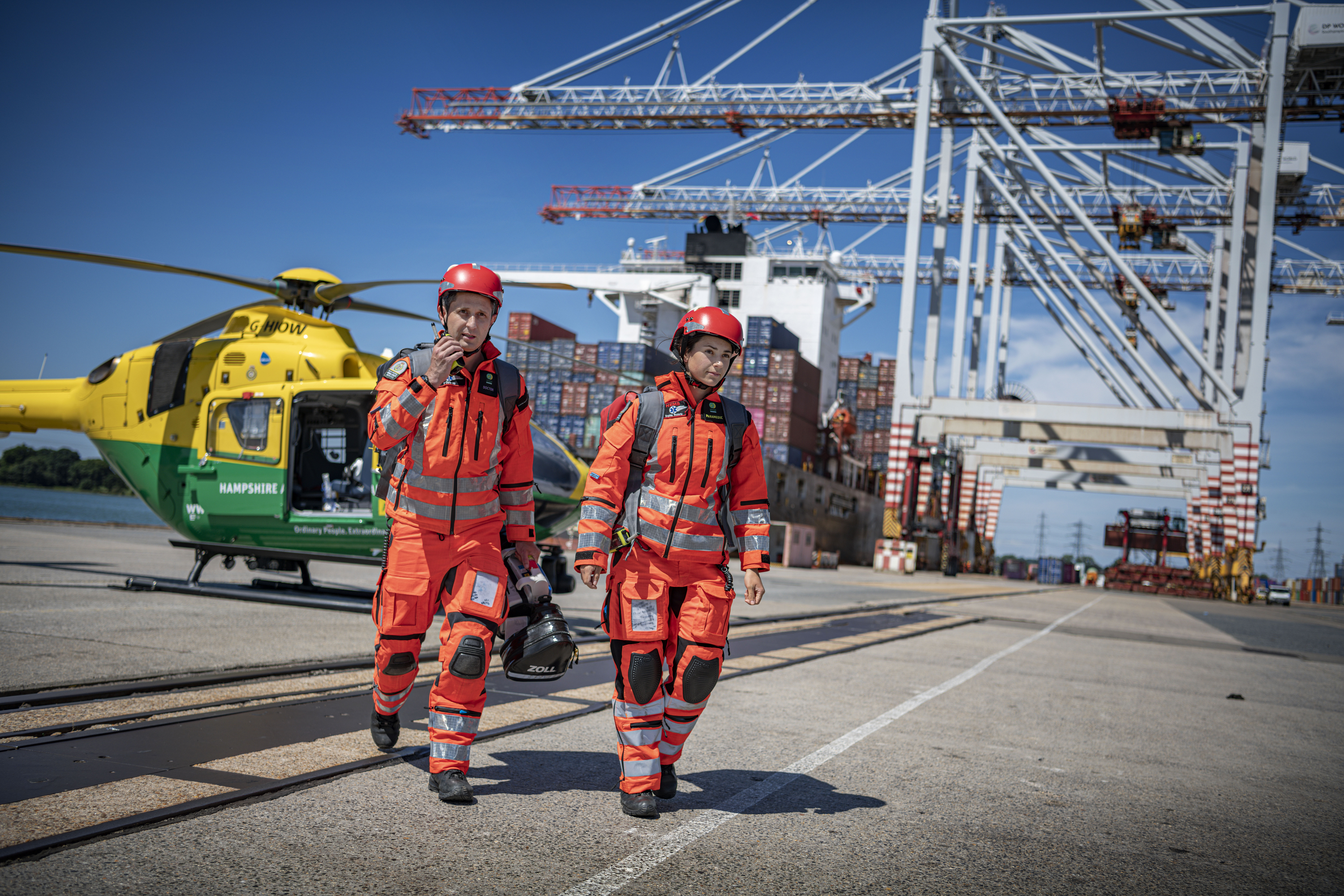Train hard to fight easy. A mantra we stick by to get the best possible care to our patients. We recently caught up with Dr Chris Hill who was co-running a major incident training day at our airbase with our ambulance service colleagues.
What’s going on today?
Today’s session is all about major incidents and how we respond and work with our ambulance service colleagues. We need to understand what we can expect when we arrive on scene, what different roles we might have to play and when you’ve got an overwhelming number of patients, working out who needs to be treated first.
How regularly does training like this take place?
We train in this type of stuff all the time – it gives us an opportunity to be the best we can be for our colleagues on scene and, ultimately, for our patients.
Today is part of our quarterly in-person training. But in light of the Manchester bombing inquiry, the emergency services are updating its major incident plans – we want to take the learnings from that and make us even better when dealing with major and critical incidents.

What are major and critical incidents?
The ambulance service has a grid to work out how they classify whether an incident is normal, critical or major.
It all depends on the number of patients and any specialist circumstances surrounding the incident, such as if a patient’s trapped or there’s a hazard involved.
- if there are less than three patients involved, it’s business as usual for us
- if there are more than three patients, then it might be a critical incident
- anywhere up to 20 patients and beyond, it’s often a major incident.
How often do we respond to critical and major incidents?
We’re in a really busy period right now. Summertime is always busy, but this Summer is especially.
What’s the reason for that?
The lovely weather brings people out and about. So, for example, multi-vehicle crashes suddenly have lots of passengers on board, and therefore the number of patients increases.
How do Hampshire and Isle of Wight Air Ambulance and the ambulance service work together on scene?
We are an asset to the ambulance service which they can call on to help. It has to be a collaborative approach.
We want to get the absolute best out of ourselves so we can treat as many patients as possible. We have to lead in our own way but we also have to follow the lead of the commanders on scene so that we can integrate seamlessly onto a scene.
Our experienced and highly trained crew members can see where the blind spots might be and say, “have you thought about X, Y, Z?”
Be the first to hear about all our latest news. Sign up to our email newsletter today.


 Donate
Donate






